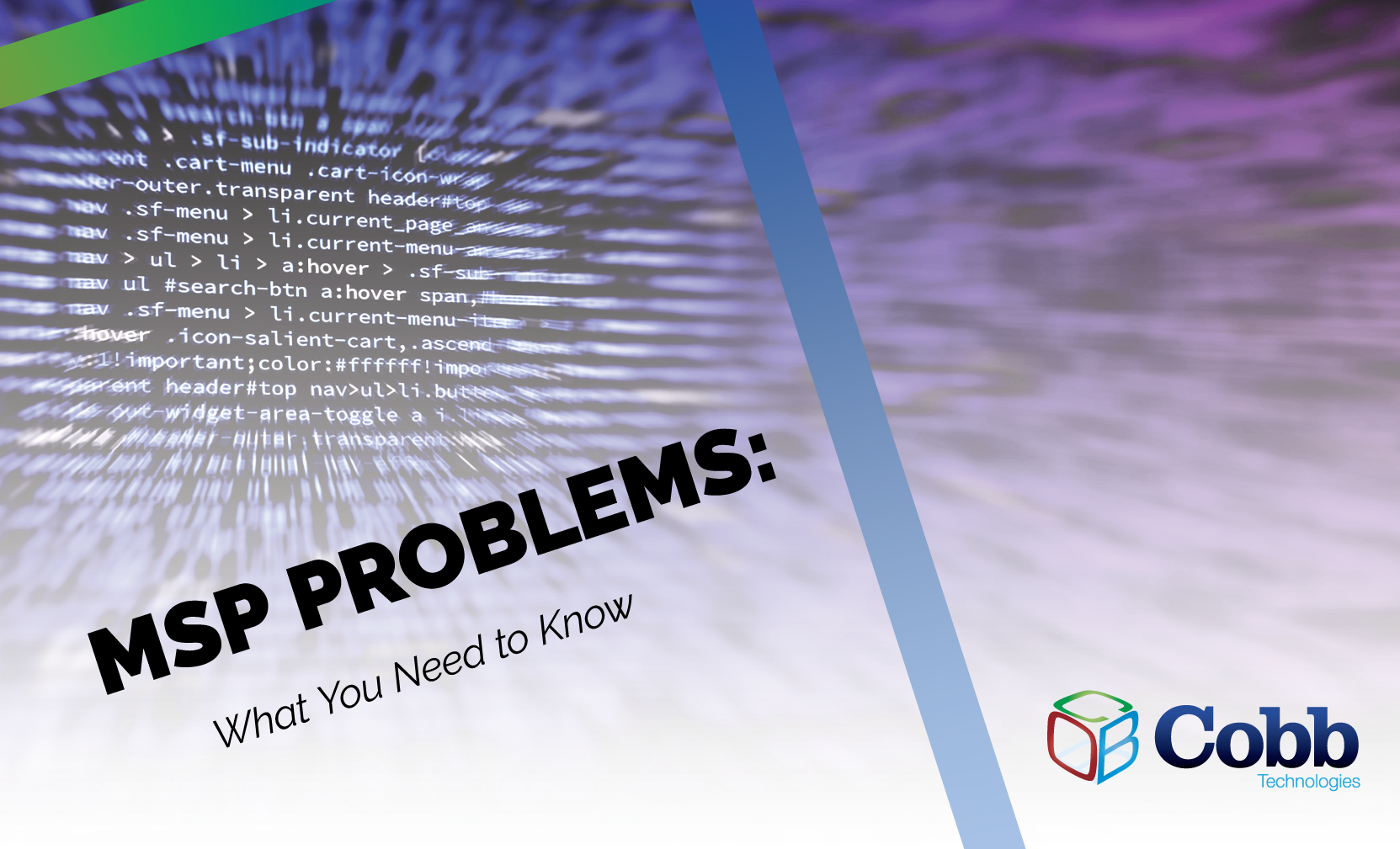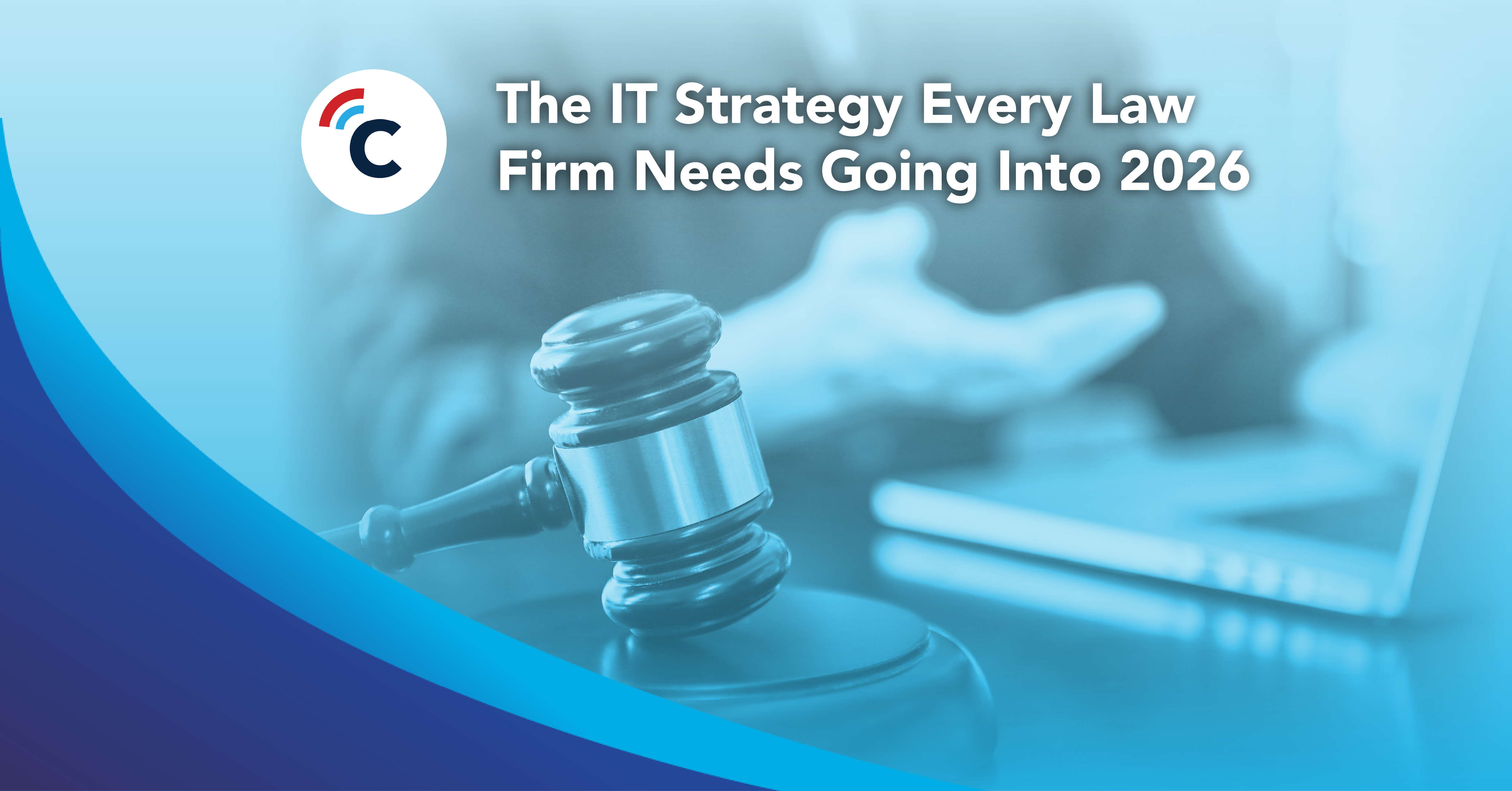11 min read
Best IT Strategies for Law Firms Going Into 2026
Why should a law firm invest in a strong modern IT strategy? Today’s legal teams depend on secure, reliable technology to protect sensitive...

Nothing’s perfect — it’s a lesson we learn early on in life. And just like everything else, partnering with a MSP (Managed Service Provider) won’t always go according to plan. There’s a lot that can go wrong when a MSP takes over your backend and frontend systems — but just as no business venture is ever perfect, having a game-plan put in place before restructuring your enterprise ecosystem can help mitigate (or completely forgo) these inherent risks and speed-bumps.
Throughout this blog, we’ll cover some of the most common issues companies (both large and small) face when switching over to a MSP. The most important precaution you can take, however, is to know what you want.
By knowing what your company’s end goal is in regards to your partnership with a MSP, you’ll notice two main benefits: less time spent in the consultation phase, and a faster adoption process. Ultimately, by knowing what results you want to see, you’ll significantly reduce the initial cost of working with your new MSP partner.
Your plan needn’t be technical — your MSP will handle the details — just being able to tell your new partner “We’d like to reduce the latency in our connections,” or “We want to automate our intake process,” will give you a leg up, and reduce most headaches that might arise.
It’s important to predicate this with a disclaimer; your MSP should most definitely listen to what you have to say, field your concerns, and answer your questions. Working with a MSP is a partnership after all, so you needn’t expect to be ignored. You might, however, find some answers to your questions to be uncomfortable.
A MSP is as much a guide as it is a partner — while your MSP should be there for your company through thick and thin, they’re also responsible for the tech-related path your company takes. Due to this inherent responsibility, a MSP will always favor telling hard truths over telling you what you want to hear.
This can lead to disconnect or mistrust between you and your MSP if not handled properly — when forming the foundations of your partnership with your MSP, make sure to clearly set expectations for KPIs and goals — this will help you more accurately measure the impact your MSP has had on your tech stack.
Some ideas for measurable KPIs are as follows:
These KPIs, of course, will change depending on what you want to achieve with your MSP. It’s also important to review these goals as time goes on — a partnership with a MSP is a continual process, so after you’ve seen the results achieved from your first phase plan, you’ll want to meet again to discuss next steps.
There’s one belief every company shares: “We’re different.” While this is good for finding your market niche (as well as fostering a dedicated client or customer base) it’s one of the major hurdles associated with adopting an enterprise ecosystem.
There’s a reason every MSP in the business will begin every partnership with a network audit or a DWA (document workflow analysis) — it’s as much to find the risks and flaws in your enterprise ecosystem as it is to understand the architecture of your environment. It’s only after conducting this audit that a MSP will be able to begin planning your ecosystem’s update, new security measures, or workflow automation.
If your company is planning on a deadline for rollout of a new system, be sure to include time for your MSP to analyze your environment — and be ready to pause your operations during this audit. Experiencing a minor slow-down in order to ensure the adoption of a proper strategy with your MSP is worth it; when it comes to the health and security of your enterprise ecosystem, “measure twice, cut once” is often not enough. Measure everything — then cut as needed.
Unless you’re building your enterprise ecosystem from scratch, adopting a legacy system is simultaneously both an additive and subtractive process. Let’s imagine, for example, that your MSP is replacing your accounting software with a new platform that integrates with your payroll, in order to synchronize these two departments.
First, your MSP will analyze the systems and processes that both departments currently utilize. Next, they will create a new, separate environment that will function as the connecting platform for your HR and accounting teams. After data has been transferred and merged from the two existent systems into one new platform (and testing has come back with no issues), your MSP will remove the old systems, and immediately replace them with the new platform.
Before this rollout occurs, it’s best practice to train your employees on how to use the new platform — once it is implemented, the old systems they are familiarized with will be gone. In order to reduce wasted time getting back up to speed after implementation, it’s best to introduce your employees to these new operations before any changes occur.
It’s also important to be aware that this process will continue until all of your shared goals with your MSP have been achieved — analyze, plan, train, and implement — deploy updates in that order, and you’ll mitigate a slew of redundancies and delays in your daily operations.
By knowing what you want, and how to measure your success in achieving those goals, you’ll already be way ahead of the game when it comes to working with a MSP. By playing a role in the various phases that happen before implementation, you can train your employees on the mastery of new systems before they are implemented. And by having a continual set of goals to work towards, you can ensure a productive partnership with your MSP that keeps your enterprise ecosystem simultaneously up-to-date and secure.

11 min read
Why should a law firm invest in a strong modern IT strategy? Today’s legal teams depend on secure, reliable technology to protect sensitive...

2 min read
The Louvre’s password became the punchline of a global story after a heist revealed major security concerns for the museum. Reports say the password...

6 min read
Organizations of all sizes handle enormous volumes of data. Data is one of the most valuable assets of any organization.Unfortunately, it’s also a...